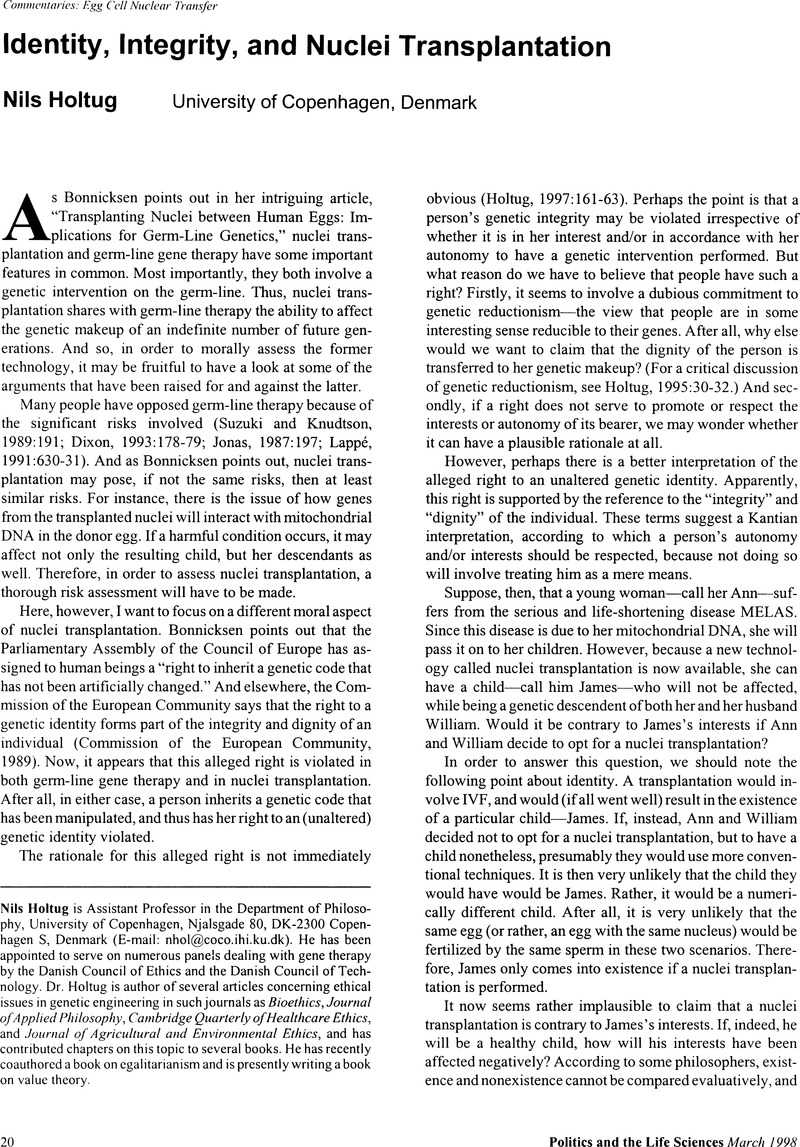Crossref Citations
This article has been cited by the following publications. This list is generated based on data provided by Crossref.
Liaw, Ying-Qi
Turkmendag, Ilke
and
Hollingsworth, Kathryn
2021.
Reinterpreting “genetic identity” in the regulatory and ethical context of heritable genome editing.
New Genetics and Society,
Vol. 40,
Issue. 4,
p.
406.





